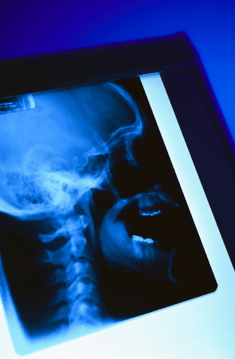 If you are like most personal injury attorneys, you’ve had first-hand experience with the infamous program Colossus.
If you are like most personal injury attorneys, you’ve had first-hand experience with the infamous program Colossus.
But what are the important factors that influence this program, and how will it affect your cases?
Colossus was developed by an Australian company called Computer Sciences Corporation. It is used by more than 70% of the major insurers in America.
The basic premise of the program is very simple: an adjustor inputs information from the notes of the treating physicians and the demand letters.
Colossus then generates a settlement value for the case, which sets the benchmark for the initial offer. There are over 10,400 “value drivers” or factors that influence the value of the claim.
Understanding what these value drivers are and how they should be presented to adjustors is critical to maximize the value of personal injury cases.
The information must be presented in a format that can be easily understood, and therefore inputted by the claims adjustor.
So what are some of the important factors to consider with Colossus?
 Legible Records
Legible Records
The notes of the treating physician must be legible and complete. The program tracks the value of the cases that a physician sees, linking them to their federal tax ID number or Social Security number.
If a doctor consistently has illegible or incomplete notes, this is noted and brings down claim values.
Second Opinions
If another opinion is obtained from another physician, this is recognized by Colossus. Ironically, defense medical examinations can actually act as value drivers that raise the value of the claim!
Duties Under Duress
This refers to the patient continuing to perform their normal activities of gainful employment while in pain. This is often not reported in the medical records, but must be included in order to be considered by Colossus.
Impairment Rating
An often overlooked value driver is the assignment of a permanent impairment rating by the treating physician.
This is actually the single most important factor other than the injury itself. As part of their training, adjusters are advised, “Impairment ratings must be AMA derived, medically documented, and the patient is permanent and stationary.
In order be recognized through Colossus, the rating must be 2% or more.
The Role of Chiropractic In Trauma Cases
 A chiropractor trained in the evaluation and management of musculoskeletal injuries is absolutely critical in the proper triage of trauma patients.
A chiropractor trained in the evaluation and management of musculoskeletal injuries is absolutely critical in the proper triage of trauma patients.
A chiropractic physician is uniquely trained in diverse areas such as spinal biomechanics, disc pathology, MRI interpretation, and neurophysiology.
We recognize the importance of a good team of medical experts.
We refer cases for second opinions from the appropriate specialists, and work to obtain all the necessary diagnostic testing to paint an accurate picture of your client’s injuries.
We are always available to answer questions regarding the treatment or progress of your client.
Diagnoses As Value Drivers
The diagnosis rendered is the most important value driver in Colossus. As can be expected, a diagnoses such as a disc herniation, fracture, or concussion are factored prominently into the calculations.
It is, however, critical that physicians note the specific level of the injury, and any radiation of pain that the patient is experiencing as a result of the injury.
Even more important are the codes that many physicians ob- serve but do not necessarily note: many of these can be very important in how they impact the value of the case.
Contusions
Because they typically heal in a week or two, many treating doctors do not take the time to note and measure any contusions or abrasions from the collision.
The more contusions present, the higher the claim is valued. It is important that physicians note, measure, and preferably photograph all contusions or bruises.
Dizziness
This is often a transient symptom, but can be an indicator of mild head trauma or upper cervical ligamentous instability.
Headaches
These are another indicator that the patient sustained damage to the upper cervical spine or head. The frequency and severity of headaches should be recorded in the treatment notes.
Muscle Spasm
Colossus places a high value on muscle spasm, particularly when the specific muscle group or lev- el is noted.
Although many physicians regard the term “muscle spasm” as a non-specific and vague term, it is important. In fact, if the physician notes more than 3 different points of spasm, this is viewed as even more significant than loss of range of motion.
 Disc Lesions
Disc Lesions
Colossus only recognizes two types of disc pathology: bulges and herniations. If the term “protrusion”, “prolapse” or “extrusion” are used, adjusters are trained to regard these as synonymous with a disc bulge. Bulges are then down-coded automatically to a sprain/strain diagnosis.

.png?width=600&name=Ethos%20Health%20Group,%20(1).png)






